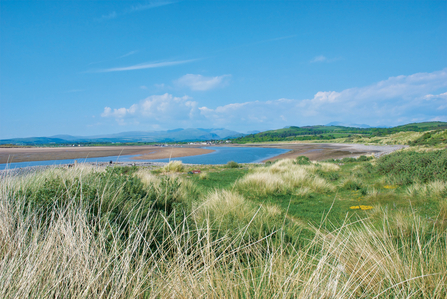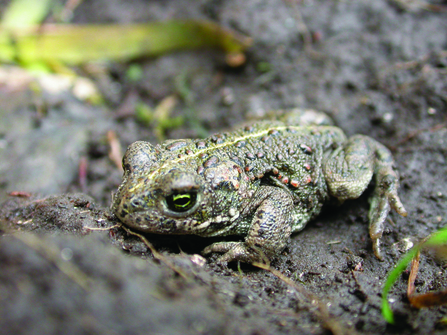
Eskmeal Dunes © John Morrison
Join by 30 January to get 3 months free membership!

Eskmeal Dunes © John Morrison
Sand dunes are listed as the habitat most at risk in Europe. They are the backdrop of many summer holidays but are being smothered by invasive plants, destroying the habitats of some of our most endangered species, including the natterjack toad.
Now, a pioneering partnership - Dynamic Dunescapes - backed by £4m from The National Lottery Heritage Fund is stepping in to save them by working with people to bring life back to the dunes and get them thriving again, reversing a decades-old approach to dune management.
The project (which covers England and Wales) will start later in 2019 and, in Cumbria, will be led by Cumbria Wildlife Trust and Natural England. The project will restore Cumbria’s dunes, creating dune slacks and removing invasive species. There will be lots of opportunities to get involved through events, skills training, citizen science, education resources and improved access to our dune sites.
David Harpley, Conservation Manager at Cumbria Wildlife Trust said: “This announcement is fantastic news and will give a real boost to the important work of preserving precious sand dunes. We’ve been involved in restoring sand dune habitats in Cumbria for many years at our coastal nature reserves, such as South Walney near Barrow and at Eskmeal Dunes near Ravenglass. Eskmeal Dunes is a great place to see the rare natterjack toad along with many speciality dune plants, such as wild pansy, sea sandwort and Portland spurge. This new partnership will enable us to work with other organisations to restore and manage more dunes on the west Cumbrian coast, offering greater protection to these important species.”

Natterjack toads are rare but you have the opportunity to help conserve them © Philip Precey
Eskmeal Dunes is a great place to see the rare natterjack toad along with many speciality dune plants, such as wild pansy, sea sandwort and Portland spurgeDavid Harpley, Conservation ManagerCumbria Wildlife Trust
Drew Bennellick, Head of Land and Nature Policy UK at The National Lottery Heritage Fund, said: “This is a really exciting project with a pioneering approach to dune management. In recent decades the approach has been to keep dunes where they are by using fencing and vegetation. We now know that this is bad news for some of the rare species that make their homes among our dunes and they need to be able to naturally move – to be Dynamic Dunescapes.
“It’s not easy to get the balance right – we need dunes to move but we don’t want them to end up in people’s gardens or taking over the beachside car park. Thanks to this National Lottery funding and the expertise of the partnership organisations, this project can begin to find ways of addressing these pressing issues.”
Maggie Robinson, Dynamic Dunescapes team lead at Natural England said: “This funding from The National Lottery Heritage Fund gives us an exciting opportunity to join with communities on their local sand dune sites, developing citizen science projects with them and hold events that celebrate the nature of our wonderful Cumbrian coast.
“People will also have the opportunity to get their hands sandy, by helping with practical tasks to conserve this rare habitat and the endangered species that are dependent on it.”
Dunes are naturally mobile and need to be dynamic to be effective ecosystems. However, previous management measures restricted public access, and invasive species have prevented dunes from moving, causing many to become static, sterile grassy hillocks.
Thanks to National Lottery players, Natural England has teamed up with the National Trust, Plantlife, The Wildlife Trusts and Natural Resources Wales to combine their expertise and achieve a sustainable future for sand dune landscapes working closely with landowners and communities.